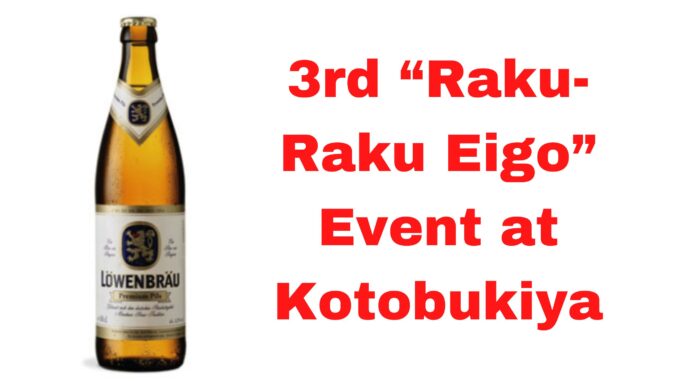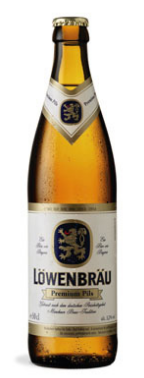
The third Rakuraku Eigo event took place at Kotobukya, Rakurakuen on Tuesday 22nd April, 2:40pm-5pm. Four members of the Ajina-dai Community Centre Thursday morning English conversation class and one member of the Koi-Ue Community Centre Saturday morning English conversation class were present.
Mr Amano, of Koi-Ue Community Centre started the conversation with a question about the definition of ale. This was probably because Mr Gouhori, Mr Kawasaki and the organiser, David Hurley (that’s me), promptly ordered a round of Löwenbrau Premium Pils, while Mrs Kanda, Mrs Fujii and Mr Amano ordered Kotobukiya’s home-made ginger ale.
With the help of google and Wikipedia via our smart phones, we discovered that ale is “brewed from malted barley using a warm fermentation with a strain of brewers’ yeast.” The yeast ferments the beer quickly, giving it a sweet, full-bodied, fruity taste.
We discussed the meaning of “full-bodied” for a while. It is a term usually associated with wine-tasting. A full bodied wine is characterized by its “mouth coating density” (according to Wine Folly ) and its astringency. Although wine tasters use “descriptors” to attempt to objectify the wine-tasting experience, descriptors such as “full-bodied” are essentially vague and subjective.
I noted that the Italian red wine, Merlot, which is available at the nearby Madam Joy supermarket, is at the lighter end of “full-bodied” wines as defined by WineFolly.com.
One technique that adds body to a wine is oak aging. Mention of this led on to a question about whisky barrels and the difference between whisky and whiskey.
“Whisky” is the preferred spelling of Scottish, Canadian and Japanese distillers, whereas “whiskey” is the preferred spelling of Irish and American producers. See TheKitchn.com for an easy way to remember!
As for whisky barrels, Mr Amano thought he remembered a conversation about cherry wood having been used by a Scotch whisky company, but this was ruled out as one of the definitions of Scotch whisky is that it be matured in oak casks.
Whisky, and English beer (bitter) are typically served at room temperature and mention of this moved the conversation back to beer. I mentioned the difference between cask and keg beers and how cask beers required more care. I mentioned having enjoyed a good pint of Shepherd and Neame bitter (a southern beer) in Yorkshire once.
Somebody asked what makes a dark beer dark… and that led us on to consider the beer-making process. Malt is germinated cereal dried in a process called “malting”. Malting is the process of inducing germination by soaking in water, then arresting germination by drying in hot air.
Finger Counting
By now two or three beers had gone down the hatch and Mr Kawasaki suddenly changed the subject by mentioning “finger counting” techniques, referring back to the previous Thursday’s lesson at Ajina-dai kominkan. This video shows you how to use your fingers to calculate from 6 x 6 to 10 x 10…
We talked about decimals, fractions and base number systems. That led on to some chat about the old English Imperial currency, in which 12 pence = 1 shilling and 20 shillings = 1 pound. The decimal system was introduced in the U. K. in 1971.
Mr Gouhori, Mr Kawasaki and myself had one more beer “for the road”. During this part of the afternoon Mrs Kanda talked about how globalization had had the effect of creating “sousaku ryouri,” or “innovative food” and “fusion cuisine.”
The part broke up at 5pm. Thank you for attending, everybody! It was a lot of fun!
The next Rakuraku Eigo event will take place on the fourth Tuesday of May, i.e. May 27th.
DH

